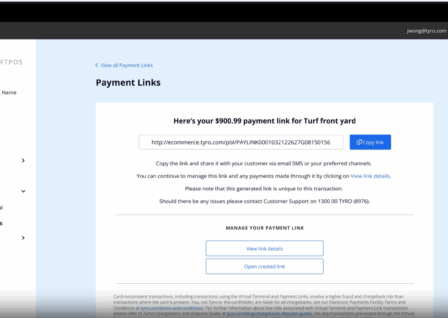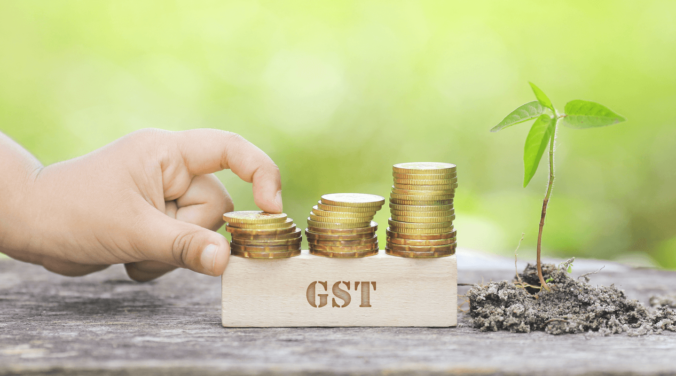Why Payment Links for Small Businesses Are Changing the Way Owners Accept Payments


The Goods and Services Tax (GST) has been about for two decades now, and while it’s well entrenched, the grey areas can cause more than a headache or two, particularly if you’re new to small business or it’s been a while since you got stuck into the detail. In this explainer, we go into how the GST works, who needs it, what’s truly claimable, the definition of a valid tax invoice, and more.
The Australian Government implemented the GST in 1999 via the legislation – A New Tax System (Goods and Services Tax) Act 1999. A transactional tax, its intention was to tax each stage of a ‘value addition’ in a good’s or service’s life cycle (where a new product is basically created), until consumed by the end customer – the person ultimately responsible for making the GST payment.


Bear with us, here. We’re getting fairly deep into the numbers so you can better understand the concept of ‘value addition’. If you’d rather, you can skip this bit and move down to the GST checklist.
| Who or What | Subject to GST? | GST Cost or Refund |
| Seed Nursery sells tomato seeds to farmer | Yes usually It’s not considered food | To nursery = AUD$1 Calculated as 10% of sale price, assume AUD$10 minus GST on purchase = assume nil as internally generated (noting in theory that the nursery could claim GST input tax credits for things used in producing the seeds). |
| Tomato Fully grown tomato, sold by farmer to fruit and veg wholesaler | Not likely It’s unprocessed food | To farmer on sale = AUD$1 Calculated as GST on sale = AUD$ minus GST on purchase of seeds = AUD$1 |
| Manufacturer The wholesaler sells the same tomato to a tomato sauce manufacturer | Not likely It’s unprocessed food | To wholesaler on sale = AUD$0 Calculated as GST on sale = AUD 0 minus GST on purchase of tomato = AUD$0 |
| Retailer The sauce manufacturer processes, packages and sells the tomato sauce to a retailer | Yes GST is incurred on the sale | To retailer on sale = AUD$0.50 Calculated as GST on sale = AUD 0.50 (10% of sale price, assume AUD5) minus GST on purchase of tomato=AUD 0 |
| Customer The retailer via its supermarket sells this tomato sauce to the ultimate customer – for this scenario, we’ll assume it’s a private customer | Yes GST is incurred on the sale | To retailer on sale = AUD$0.10 Calculated as GST on sale = AUD$0.60 (10% of sale price, assume AUD$6 with a AUD 1 margin added by retailer) minus GST on purchase of tomato = AUD$0.50 as calculated in the above Retailer section |
And the ultimate sale to the private customer?
Subject to GST = AUD$0.60
Calculated as GST on purchase price = AUD$0.60
Through the life cycle of the tomato from seed to sauce, the ATO is paid a total of AUD$0.60 (remitted by the manufacturer and the retailer).
Note that if the customer was a business such as a restaurant (rather than a private customer), an additional value attributable to the services provided by the restaurant would be included before the private consumer paid for it. So another phase in the GST life cycle would appear in the scenario above.
Small businesses can ensure compliance with GST law by following these fast five rules:
1. Check if you need to register for GST
2. Know what you’re selling and its GST rate
3. Only claim GST on purchases where you hold a valid tax invoice
4. Lodge your Business Activity Statement (BAS) in time with correct information recorded
5. Store records like tax invoices securely, and back them up regularly
You can register for GST on the same form as when applying for an Australian Business Number – noting that GST registration isn’t required until your business has a ‘GST turnover’ (gross income minus GST) of AUD$75,000 or more.
Read more on the ATO website
GST rates are based on the good or service being provided – so a business could have different GST rates for the goods and services they provide.
Good to know is that some business accounting software comes with a pre-set table of rates for different items, and providers allow you to set up GST rate tables for items purchased and sold by your business. Your accountant can most likely help in this regard also.
Useful links
GST and health
When medical services are GST free
Food and beverage search tool
Food list and the Act
Accommodation and food services
Handy fact
Tax invoices aren’t required if the GST-exclusive value of the sale is $75 or less.
Purchasing businesses must hold a ‘valid’ tax invoice to claim GST on the invoice. So let’s take a look at the definition of ‘valid’.
The definition of ‘valid’
A valid tax invoice isn’t necessarily a single document – conservatively, however, a single document is a useful benchmark.
Broadly speaking, here’s what it should contain:
| Says what it is | Words like ‘Tax Invoice’ |
| Seller | Seller’s identity (usually the business name) |
| ABN | Seller’s Australian Business Number (ABN) |
| Date | Date the invoice was issued |
| Description | Brief description of the items sold, including quantity (if applicable) and price |
| GST amount | GST amount (if any) payable – this can be shown separately or, if the GST amount is exactly one-eleventh of the total price, the words “Total price includes GST” |
| Itemised GST | The extent to which each sale on the invoice is a taxable sale (e.g. if only certain items attract GST, this should be clear) |
| If AUD$1,000+ | For items equal to or greater than AUD$1,000 (GST inclusive), the buyer’s name and / or ABN must also be included |
Useful links
General info about tax invoices
Tax invoices and what to include
Most small businesses using off-the-shelf accounting software are able to collate and lodge a Business Activity Statement (BAS) relatively simply – whether you DIY or use a tax or BAS agent (usually qualified accountants). Just remember to always lodge it on time. And that when it comes to frequency, lodgement is determined by ‘GST turnover thresholds’ as explained here on the ATO website.
Doing your BAS manually?
If doing your BAS without a system or agent, be mindful of the requirements of each ‘Label’ on the BAS. You can read more about filling out a BAS on the ATO website:
Simpler BAS GST bookkeeping guide
GST, PAYG and other tax tips
Your tax records must typically be kept in an accessible form (either printed or electronic) for five years. A key exception here is where you have amended a tax return (including a BAS) – should this happen, the five-year period is reset.
Remember to also keep your tax records and tax invoices safe. And back them up regularly!
Useful links
Small business record keeping
Tyro provides this article for general information and educational purposes and does not take into account the financial situation or needs of any reader. The information provided must not be relied upon as financial product advice. Taxation considerations are general and based on present taxation laws and may be subject to change. You should seek independent, professional tax advice before making any decision based on this information.
Tyro may from time to time provide links to other websites for information purposes. The inclusion of links does not imply endorsement or support by Tyro of any of the linked information, services, products, or providers. Tyro does not accept any responsibility for any errors, omissions or reliability of such content and any use thereof is solely at the user’s risk. Please undertake your own assessment before relying on it.
3 Jul 2025 - 0 min read
Australian-based 24/7 support